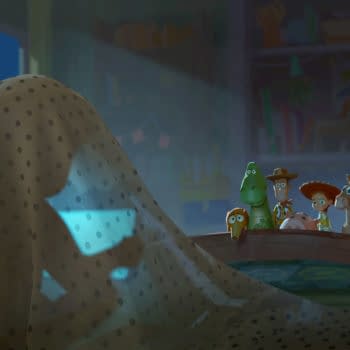Posted in: Movies, TV | Tagged: Carmilla, entertainment, horror, Sheridan Le Fanu, tv, vampires, Webseries
How Do You Solve A Problem Like Carmilla? Look! It Moves! By Adi Tantimedh
Adi Tantimedh writes:

Then again, I can always make an exception for a good story, and here's one. Carmilla is a new Canadian webseries adaptation of the original 19th Century lesbian vampire novella by J. Sheridan Le Fanu that's gaining a huge fanbase through word-of-mouth. I first heard about it through Erica Friedman's blog.
The original novella was actually published a few years before Bram Stoker's Dracula and was a story told in the form of letters written by its heroine as she meets and comes under the spell of the title character. It was a fairly typical example of sexual anxiety expressed in gothic horror novels in the 19th Century, complete with a tragic ending that restores the patriarchal status quo. The novella actually influenced Stoker when he eventually wrote Dracula.
What sets the webseries apart from others is how clever and witty the writing is. Unlike the original novella, it's a comedy in a post-Buffy, post-Veronica Mars era with layers of irony and self-aware humour. The writing finds a way to keep the basic structure of the story by presenting the story as a video diary made by Laura the freshman college student in her dorm. Carmilla here is a snarky leather goth and the heroine is a perky journalism student. The script is full of in-jokes about campus life, college gender politics and veiled geek references, turning the story into an analogy about bad roommates and unsuitable girlfriends. The series actively riffs on the structure and characters from the novella to make watching it an amusingly meta experience if you've read the book.

[youtube]https://www.youtube.com/watch?v=h4QzRfvkJZ4[/youtube]
This is the type of show that, like Buffy, Doctor Who and Veronica Mars, engenders a huge geek fan following, taking advantage of the internet and social media to spread the word. Fan fiction, fan art and gatherings abound, and it even has an official spinoff serialised web novella where the story is seen from the perspective of another student whose dorm room is next to the heroine's.
The popularity of the series has also meant the show has been given a second season, coming next year. The show may not have the high production values of a network TV show, but the writing is as good as any other show of its type on TV. That the show was funded by U by Kotex and successfully aimed at a female audience is interesting to me as another model for how scripted drama can be produced. It may not have the huge mainstream numbers of a network TV show, but its modest, growing success is a good example of an alternative to the network broadcast model. But the bottom line is, the show is bloody good fun and deserves its success.
Fangs for the memories at lookitmoves@gmail.com
Follow the official LOOK! IT MOVES! twitter feed at http://twitter.com/lookitmoves for thoughts and snark on media and pop culture, stuff for future columns and stuff I may never spend a whole column writing about.
Look! It Moves! © Adisakdi Tantimedh


















